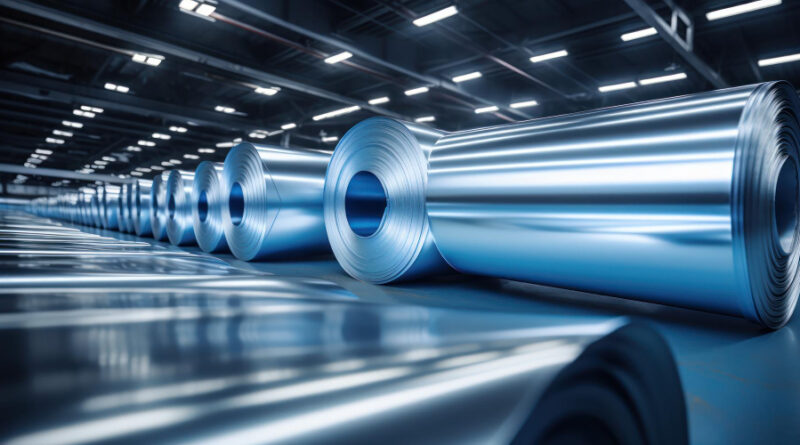Technical Aspects of Metal Sheet Piling in the Philippines
Due to geophysical and climatic conditions, metal sheet piling or stacking has become an integral construction technique in the Philippines. This is because of its robust structural solutions against flooding and soil erosion. This article dives into the technical aspects of metal sheet piling in the country. It highlights the design considerations, installation techniques, and the adaptation to local challenges.
Design Considerations
Soil Type
The islands’ varying soil types, which shifts from granular sands at the coastal areas to heavier clay inlands, dictates the extent of insertion and the precise form of sheet piling utilized. Such diversity mandates custom engineering strategies. These strategies uphold structural integrity and durability. Building methods must align with the unique geological features of each locale.
Load Factors
Design loads are significantly shaped by the building’s intended function, the likelihood of seismic disturbances in the vicinity and hydrostatic pressures from adjacent aquatic environments. These elements are important factors in structural specifications. Engineering techniques are required to guarantee both the safety and operational efficacy of the structure under diverse environmental scenarios.
Corrosion Resistance
Material selections are primarily based on their capacity to endure corrosive conditions. This is particularly crucial for constructions located near coastlines and riverbanks. This meticulous selection process aims to extend the durability of structures. It also seeks to decrease ongoing maintenance expenses. Altogether it ensures their sustained functionality in harsh weather environments.
Installation Techniques
Vibratory Hammers
Due to its remarkable quickness and effectiveness this method is widely used as the standard. Hammers that vibrate offer substantial usage. They drastically reduce installation times. This is necessary to abide by strict deadlines in quickly changing fields. Its efficiency encourages projects to be completed swiftly and increases overall productivity. This solidifies its position as the favored choice in construction.
Impact Hammers
Employed where substantial penetration is required, especially in regions with compact or rigid substrates, this technique is highly effective. Nonetheless, it does create significant noise and vibrations. This can pose challenges in urban areas with high population densities or zones that are environmentally delicate.
Addressing these potential disruptions requires thoughtful planning and the implementation of mitigation measures to reduce environmental effects while still obtaining the necessary construction results.
Press-in Method
Ideally designed for areas sensitive to noise, like urban centers or locations near hospitals, this quiet method efficiently drives piles into the ground through hydraulic pressure. Utilizing this approach significantly reduces noise and vibrations. This provides a more peaceful alternative that decreases environmental disturbance.
This advantage is important in preserving tranquility in places where noise pollution could adversely affect routine actions and overall health.
Local Challenges and Innovative Solutions
Logistical Challenges
The transportation of lengthy and heavy piles to distant or densely populated regions frequently presents substantial logistical obstacles. To address these difficulties, employing modular sheet pile designs, segmented for easier handling and transportation, proves effective.
This method enhances site management flexibility and efficiency by facilitating the assembly process directly at the construction site and diminishing the reliance on heavy lifting machinery in locations that are hard to access.
Environmental Concerns
Undertakings located in proximity to delicate ecosystems or populous urban areas demand rigorous methods to minimize environmental impacts. Employing silent piling techniques that substantially lower noise disturbances. This should be accompanied by the adoption of eco-friendly lubricants for pile driving, which constitutes some of the adaptive strategies utilized.
These initiatives align with regulatory compliances and underscore a deep commitment to sustainable building practices, thus protecting nearby natural habitats and community areas from potential adverse effects.
Maintenance Issues
Corrosion is a significant problem, particularly in coastal areas. High-grade steel with protective coatings like epoxy or galvanized finishes are used to enhance longevity and maintain structural integrity.
Future Trends
Advanced Materials
Ongoing research dedicated to creating lighter, more robust, and corrosion-resistant materials is making steady advances. The prospective deployment of composite materials or sophisticated steel alloys offers the potential to supplant conventional metals soon. Such a transition could herald considerable improvements in structural engineering, delivering more effective and environmentally sustainable construction models that are well-suited to cope with ecological pressures and prolong the durability of infrastructural projects.
Sustainable Practices
An emerging trend is the augmented incorporation of recycled materials in metal sheet piles, along with advancements in manufacturing techniques designed to diminish carbon footprints. These initiatives underscore a forward-thinking strategy within the construction industry to mitigate environmental issues.
By prioritizing sustainability in both the procurement of materials and their processing methods, the industry enhances its environmental performance and establishes pioneering benchmarks for future operations.
Technological Integration
Development of GPS and AI-integrated installation apparatus is advancing swiftly to ensure superior precision in piling tasks, consequently leading to diminished waste and greatly improved safety protocols.
This technological breakthrough simplifies the construction workflow, guaranteeing precise pile positioning which curtails excess use of materials and lessens hazards at the construction site. Consequently, these advancements facilitate improved environmental and safety results while preserving operational efficacy.
Key Takeaways
The technical aspects of metal sheet piling in the Philippines hinge on understanding local conditions, adopting suitable installation techniques, and innovating against challenges. As the country continues to develop its infrastructure to meet growing economic and environmental needs, metal sheet piling will remain a cornerstone of its construction industry, necessitating ongoing adaptations and improvements to meet future demands.

